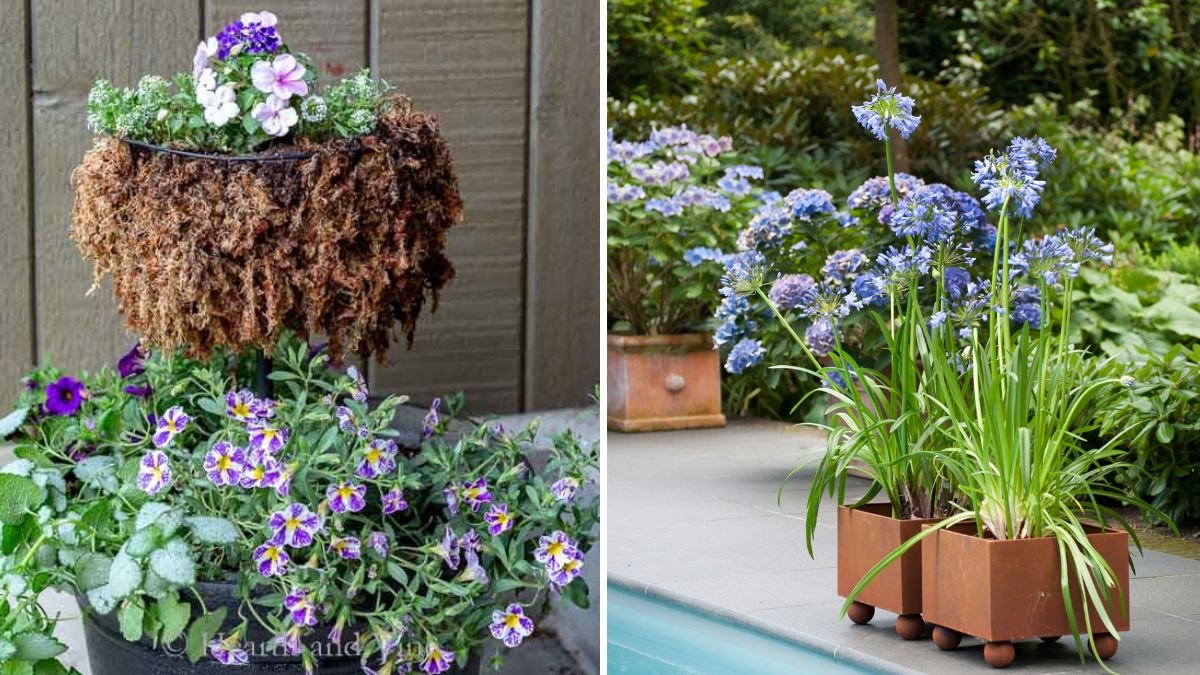Tiered containers are a creative and functional solution for small spaces, balconies, patios, and indoor gardens. They allow gardeners to maximize vertical space, create visual interest, and grow a diverse range of plants in a compact area. Layering plants in these containers isn’t just about aesthetics—it also promotes healthy growth, efficient watering, and better sunlight exposure. This guide provides a comprehensive approach to how to layer plants in tiered containers, including plant selection, design principles, soil management, and care tips.
1. Understanding the Concept of Tiered Containers
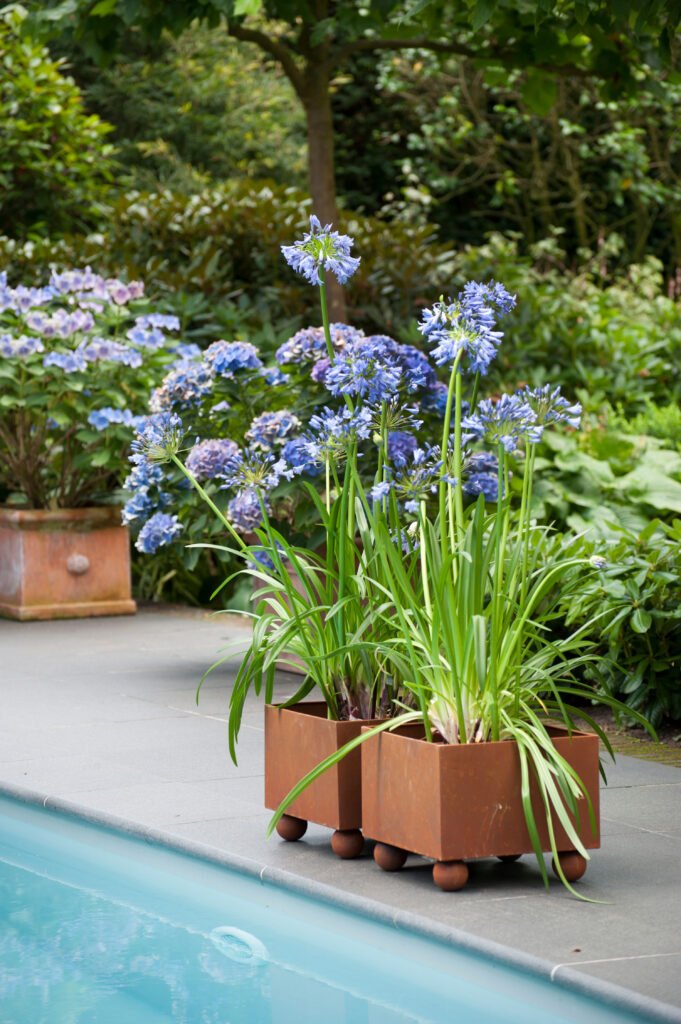
Tiered containers are stacked or multi-level planters that allow for vertical planting. They can range from:
- Multi-tiered pots or bowls stacked on a stand.
- Step-style planters that ascend in height.
- Hanging tiered containers for walls or ceilings.
The main advantages include:
- Space Efficiency: Perfect for urban gardens or small patios.
- Visual Appeal: Provides depth, layers, and a lush look.
- Plant Diversity: Different levels allow growing plants with varying sunlight, moisture, and growth requirements.
Understanding the structure helps gardeners plan the plant layout for optimal growth and aesthetics.
2. Choosing the Right Tiered Container
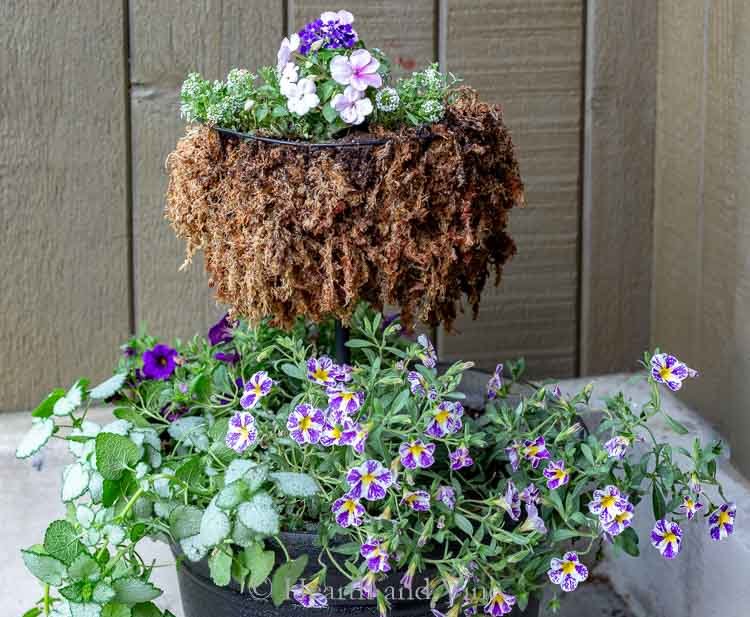
Selecting a container suited to your space and plant types is critical:
- Material:
- Plastic: Lightweight, affordable, and retains moisture well.
- Ceramic/Clay: Attractive and stable but heavier; may require careful handling.
- Wood: Rustic and durable; treat to prevent rot if used outdoors.
- Metal: Modern look; ensure insulation to prevent overheating.
- Design Considerations:
- Ensure tiers are sturdy and stable to prevent tipping.
- Look for drainage holes in each level to prevent waterlogging.
- Consider accessibility for watering and maintenance.
The container choice sets the foundation for successful plant layering and long-term durability.
3. Principles of Layering Plants
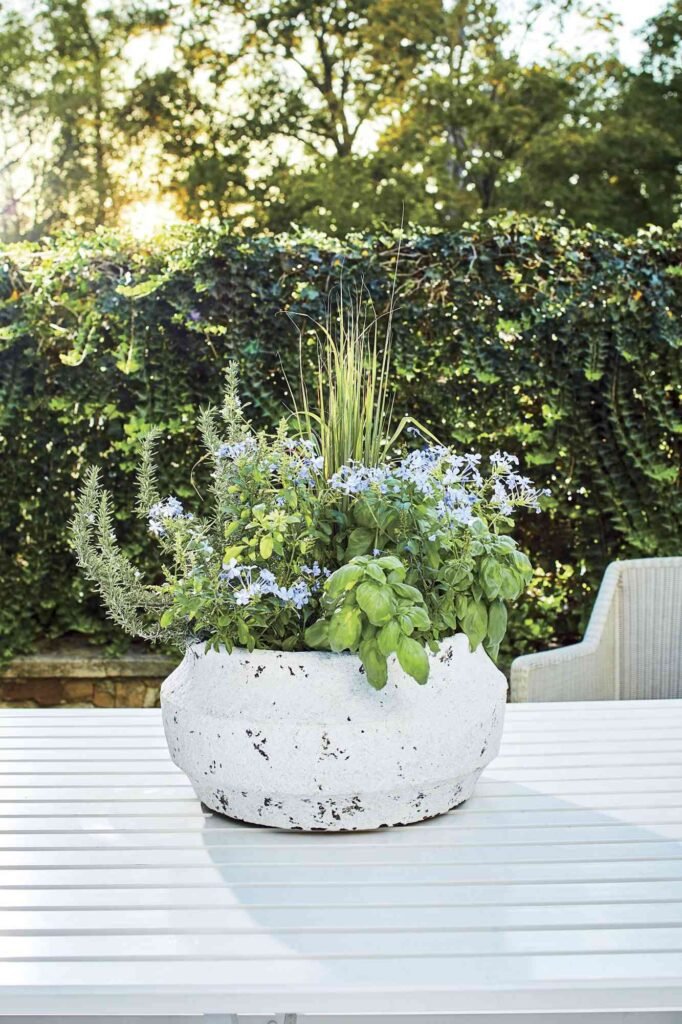
When layering plants in tiered containers, it’s important to follow key principles to promote healthy growth and create a balanced visual effect:
A. Tall Plants at the Back or Top
- Tall plants provide height and structure, acting as the focal point.
- Examples: Sunflowers, hollyhocks, ornamental grasses, or dracaena for indoor setups.
- Placement: Back of multi-level planters, top tier of stacked containers, or central upright position.
B. Medium Plants in the Middle
- Medium-height plants provide bulk and color contrast.
- Examples: Petunias, marigolds, coleus, or basil.
- Placement: Middle tiers to bridge height differences and maintain a smooth visual gradient.
C. Trailing or Cascading Plants at the Front or Lower Tiers
- Trailing plants soften edges and create a cascading effect.
- Examples: Ivy, sweet potato vine, trailing lobelia, or creeping thyme.
- Placement: Front or lowest tiers to allow vines to hang naturally.
Following this principle ensures optimal light exposure, airflow, and aesthetics.
4. Selecting Compatible Plants
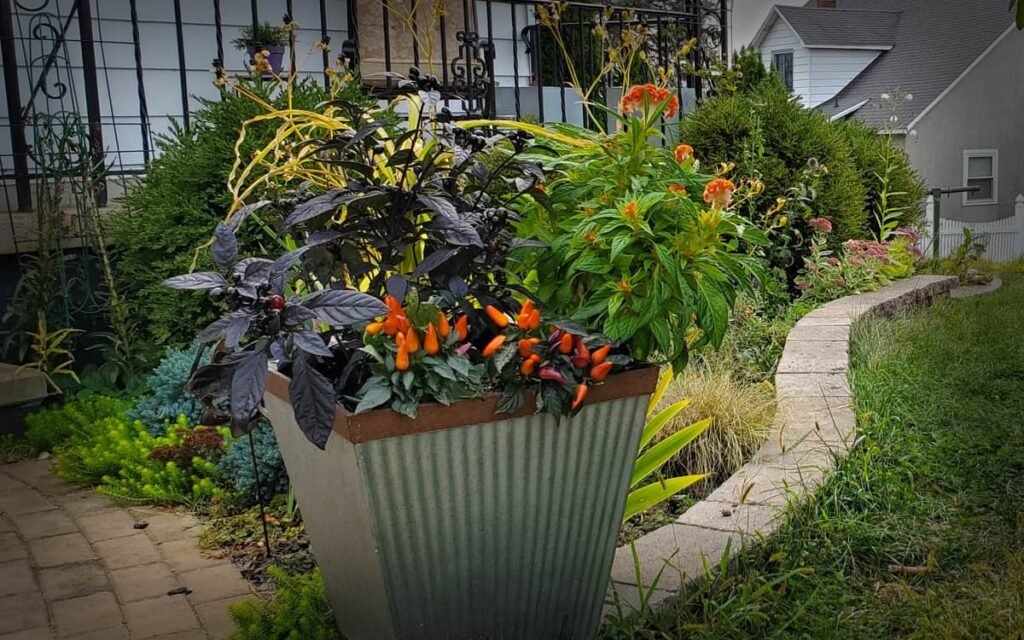
Plant selection is critical to avoid competition and ensure healthy growth:
- Sunlight Needs: Group sun-loving plants together and shade-tolerant plants separately.
- Water Requirements: Pair plants with similar watering needs to prevent under- or overwatering.
- Growth Habit: Combine upright, bushy, and trailing plants for a layered, textured appearance.
Examples of compatible combinations:
- Flowering Combo: Petunias (middle) + Lobelia (trailing) + Sunflowers (tall)
- Herb Garden: Basil (middle) + Chives (trailing) + Parsley (tall)
- Indoor Foliage: Snake plant (tall) + Pothos (trailing) + Ferns (middle)
Compatible plants reduce maintenance challenges and encourage vigorous growth.
5. Preparing the Soil Mix
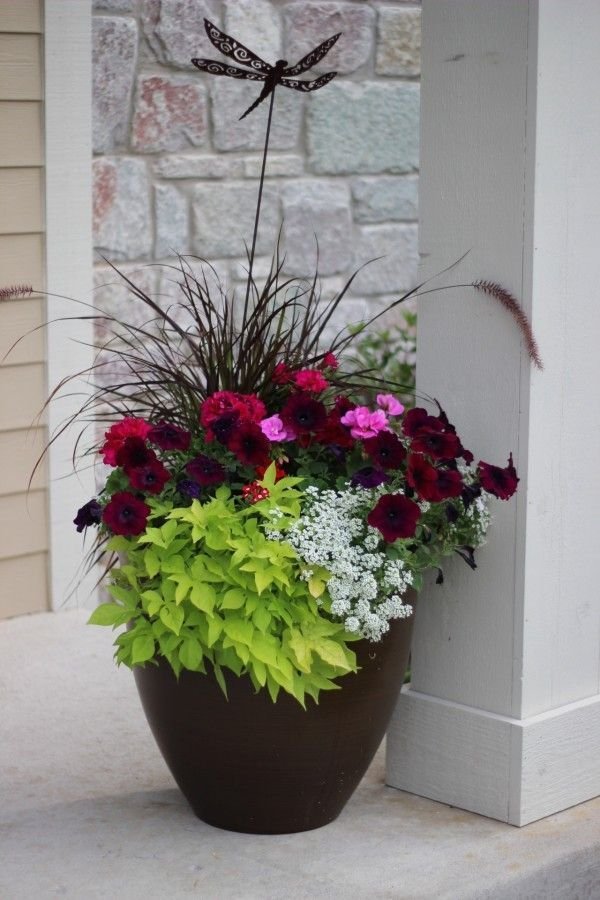
Soil preparation is crucial for container success:
- Well-Draining Soil: Use a mix of potting soil, compost, and perlite to promote drainage.
- Nutrient-Rich: Include slow-release fertilizer for steady nutrition.
- Moisture Retention: Add peat moss or coco coir to retain water without waterlogging.
Tip: Place a layer of gravel or small stones at the bottom of each tier to enhance drainage.
6. Planting Techniques
Proper planting ensures that all plants in the tiered container thrive:
- Layer from Largest to Smallest: Start with the tallest plants at the back or top tier.
- Add Soil Between Layers: Ensure each level has adequate soil depth for root growth.
- Plant Medium-Height Plants: Fill the middle tiers, leaving space for trailing plants to grow.
- Add Trailing Plants Last: Plant them at the front or edges to cascade naturally.
- Water Thoroughly: After planting, water each tier gently to settle the soil.
Layering correctly prevents root overcrowding and promotes balanced growth.
7. Watering and Maintenance
Tiered containers require careful watering because water distribution can vary by level:
- Top Tiers: Drain faster; may need more frequent watering.
- Bottom Tiers: Retain water longer; check for saturation to prevent root rot.
- Technique: Use a watering can with a narrow spout to direct water to each level evenly.
- Fertilizing: Apply liquid fertilizer every 3–4 weeks during the growing season.
Regular maintenance keeps all tiers lush, healthy, and productive.
8. Pruning and Shaping
To maintain an attractive tiered container:
- Prune Dead or Dying Leaves: Prevent disease and maintain appearance.
- Trim Trailing Plants: Guide vines to cascade gracefully without overwhelming lower levels.
- Thin Out Middle Plants: Avoid overcrowding to allow light and airflow.
Pruning encourages strong growth, extended flowering, and visual balance.
9. Pest and Disease Management
Tiered containers can sometimes create microclimates that attract pests or encourage fungal growth:
- Inspect Plants Regularly: Look for aphids, spider mites, or powdery mildew.
- Air Circulation: Ensure tiers are not too crowded to promote airflow.
- Organic Pest Control: Use neem oil, insecticidal soap, or introduce beneficial insects.
Early intervention protects the health and productivity of your tiered arrangement.
10. Seasonal Considerations
Tiered containers can adapt to different seasons:
- Spring: Plant vibrant annuals for color and energy.
- Summer: Focus on heat-tolerant plants and vegetables like cherry tomatoes or peppers.
- Autumn: Introduce chrysanthemums or kale for color and foliage variety.
- Winter: Use evergreen shrubs, indoor tropical plants, or ornamental grasses.
Seasonal planting ensures your container remains attractive and productive year-round.
11. Creative Design Tips
Enhance visual appeal and functionality:
- Color Coordination: Mix complementary colors for visual impact.
- Texture Variety: Combine smooth, spiky, and fuzzy foliage for depth.
- Height Gradation: Gradually reduce plant height from back/top to front/lower tiers.
- Replanting: Rotate seasonal plants to maintain interest and productivity.
Layering isn’t just functional; it’s an art form that elevates any garden space.
12. Benefits of Tiered Container Gardening
- Space Optimization: Grow more plants in a small footprint.
- Improved Airflow and Drainage: Tiered design encourages healthier roots.
- Visual Interest: Adds dimension and layers to any garden or balcony.
- Plant Diversity: Grow flowers, herbs, and vegetables together efficiently.
- Mobility: Lightweight containers can be moved to optimize sunlight or protect from weather.
Tiered containers transform limited space into lush, productive gardens.
Conclusion
Layering plants in tiered containers is a smart and beautiful way to garden in small spaces. By understanding plant growth habits, selecting compatible species, preparing nutrient-rich soil, and applying proper care, gardeners can create thriving vertical arrangements that are both functional and visually stunning.
Key Takeaways:
- Start with tall plants at the back/top, medium in the middle, and trailing in front/lower tiers.
- Choose a container that is stable, well-draining, and appropriate for your plant types.
- Use well-draining, nutrient-rich soil for all levels.
- Water carefully and regularly, adjusting for tier position.
- Prune and maintain plants to encourage healthy growth and balance.
- Monitor for pests and diseases to protect your garden.
- Rotate plants seasonally to maintain interest and productivity.
Tiered containers are versatile, space-saving, and visually striking, offering gardeners the ability to grow a variety of plants successfully while enhancing the beauty of their indoor or outdoor spaces. With proper layering and care, these gardens can be lush, productive, and inspiring year-round.
